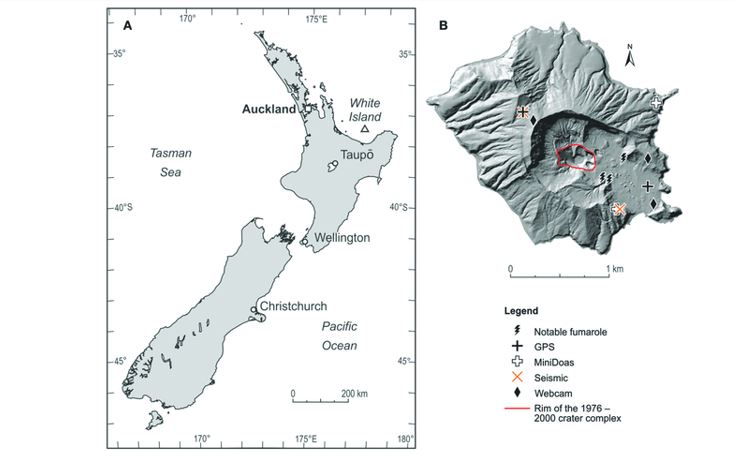

Context
Scientifically and emotively, we think every volcano has its own “personality”. However, volcanoes share behaviour traits — and this could form the basis for an eruption warning system.
About
About Whakaari Island:
- Whakaari/White Island is currently New Zealand’s most active cone volcano.
- It is located in the Bay of Plenty sitting 48 kilometres offshore.
- The cone has been built up by continuous volcanic activity over the past 150,000 years.
- The island covers an area of around 325 hectares and this is only about 30 per cent of the volcanos mass - the rest is under the sea.
- Even so, it is only about half the size of other cone volcanoes like Mount Ruapehu, Tongariro or Taranaki.
- It is a tourist magnet, with its alien landscape and spectacular hydrothermal features.
2019 Explosive Eruption
- A fatal explosive volcanic eruption occurred in December 2019.
- Tragically some visitors and guides on the island at the time were killed, and many injured.
- The eruption removed the Crater Lake, formed new vents and generated landslides into the active crater area.
Deciphering volcanic language
- Every volcano behaves differently: some have crater lakes while others are “dry”, they have diverse magmas and rise to different elevations.
- Despite these differences, we think volcanoes such as Whakaari, Ruapehu and Tongariro in New Zealand could be driven to eruption by common processes in the shallow sub-surface below their craters.
- The new study noted that one pattern repeatedly in the days before all the known Whakaari eruptions over the past decade, and most Ruapehu and Tongariro ones.
- This pattern is a slow strengthening of a quantity called Displacement Seismic Amplitude Ratio (DSAR), which peaks a few days before each event.
- DSAR is a ratio that compares the “activity” of fluids (gas, hot water, steam) at the volcano’s surface to those several hundred metres deep.
- When DSAR increases, surface fluids are quiet, but deep ones are still actively moving and circulating vigorously below ground.
- This indicates a blockage or seal has formed, preventing gas escape. Like a pressure-cooker, if the gas can’t escape a volcano, it explodes.



